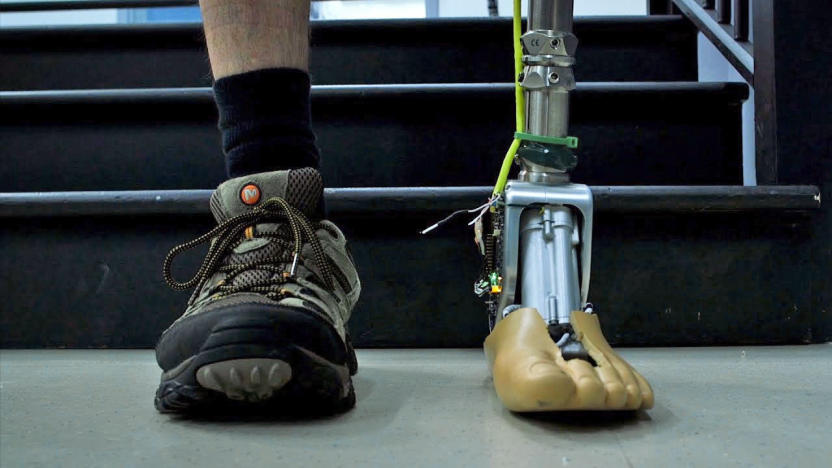ankle
Latest

Botched update crashes hundreds of Netherlands police ankle monitors
Mangled software updates are a headache for everyday users, but they created serious trouble for Dutch law enforcement in recent days. Officials have revealed that a software update created a "disruption" for hundreds of ankle monitors used to track bail releases and house arrests, leaving police without a way to locate suspects and criminals. The issue was fixed hours after it began on May 9th, but it lasted long enough that officers had to check in with wearers and even preemptively arrest some of them to ensure they stayed put.

Smart prosthetic ankle can adapt to uneven ground
Prosthetic limbs have evolved considerably from the rudimentary wooden appendages of just a few decades ago. They can be bionic, brain-controlled and loaded with features -- and even mimic the sense of touch. But they're still a way off truly replicating the real thing, largely because of issues imitating the many subtle movements and sensations that come naturally to real limbs. Now, however, a new prosthetic ankle is overcoming these challenges.

SPARKy the prosthetic ankle set to "revolutionize prosthetics"
Who knew 2007 would be such a boom year for prosthetic ankles? Surely not us, but what a year it's been, with MIT's artificial foot and ankle design we saw last month, and the ankle exoskeleton we saw the University of Michigan working on in February. Today's "ankle flavor of the week" comes to us from Arizona State University, where some doctoral students have created "SPARKy," which they expect to "revolutionize prosthetics" and plan for it to be "especially helpful for military personnel wounded in active duty." SPARKy stands for "Spring Ankle with Regenerative Kinetics," and is meant to allow amputees a more traditional walk, instead of having to compensate with other muscles and work 20 to 30 percent harder to get where they're going. The concept is pretty straight forward: "What we hope to create is a robotic tendon that actively stretches springs when the ankle rolls over the foot, thus allowing the springs to thrust or propel the artificial foot forward for the next step." There's a lightweight motor involved, but apparently this method is much less obtrusive than other such projects, which use large motors or high pressure. The robotic tendon should be ready for its first phase of demonstration in December of this year.[Via Medgadget]


